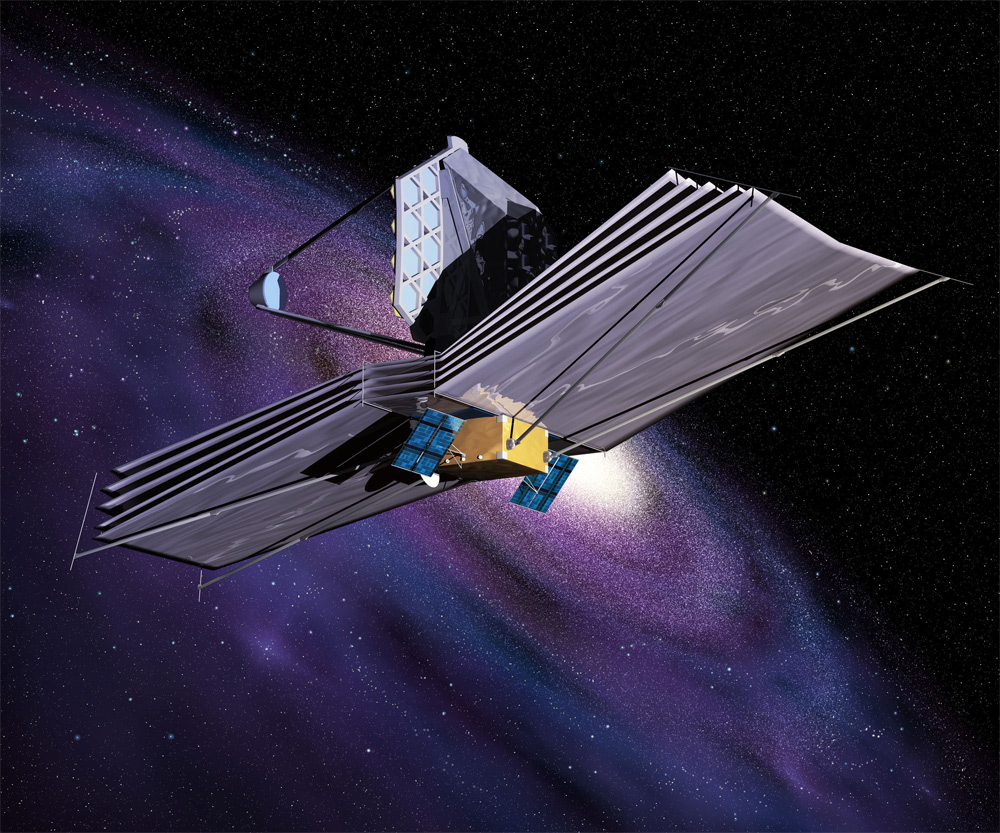NASA's Next Flagship Space Telescope Back on Track ... and on Budget

LONG BEACH, Calif. — NASA's James Webb Space Telescope — the notoriously over-budget new space observatory slated to launch in 2018 — is on time and still within its new budget, the project's chief said Wednesday (Jan. 9).
“Our budget still stands and the schedule remains the same,” Eric Smith, the space telescope's program director, told astronomers here at a town hall meeting during the 221st meeting of the American Astronomical Society.
Smith also outlined the future of the James Webb Space Telescope program in 2013 and discussed its turbulent year in 2012.
With an $8.8 billion dollar price tag, JWST is destined to be one of the largest and most expensive projects in NASA history. Set to replace the venerable Hubble Space Telescope once it is launched, JWST will take infrared images of distant galaxies, probing the cosmos for hints and signals left behind from the Big Bang.
Of the four science instruments responsible for investigating those mysteries aboard the spacecraft, two were delivered to NASA in 2012. The Mid-Infrared Instrument (MIRI) — the instrument responsible for taking “Hubble-like” images of distant galaxies, comets and other heavenly bodies — was sent last year by the European consortium that built it. [Photos: The James Webb Space Telescope]
The Canadian Space Agency has also delivered its instrument: the Fine Guidance Sensor/Near InfraRed Imager and Slitless Spectrograph (FGS/NIRISS) that will also take high-quality images of other bodies in space.
NASA is still awaiting two more contributions: the Near-Infrared Camera (NIRCam) from Lockheed Martin and the University of Arizona, and the Near-Infrared Spectrograph (NIRSpec) from the European Space Agency, which is still in its early testing phases. Both instruments measure light on the infrared spectrum. All of the science instruments are set to be integrated by the end of 2013, officials say.
Sign up for the Live Science daily newsletter now
Get the world’s most fascinating discoveries delivered straight to your inbox.
The telescope's tennis court-size sunshield is in the early stages of testing as well. The sunshield itself is too large to launch in an unfurled state, creating a unique problem for JWST scientists to solve. Instead of launching the telescope with the sunshield in place, NASA is planning to unroll the shield once the craft is in orbit. At one-third of the way complete, NASA scientists are now starting to practice rolling and unrolling the shield to see how it might unfurl in space after launch.
Once all four instruments are finished, researchers will combine them to test JWST as one cohesive unit. While final testing on the ground should begin in 2015, simulation testing using Optimal Trajectories by Implicit Simulation — a space telescope tester that mimics the temperature and environment of a space telescope in Earth’s orbit — won’t start until 2017, a year before launch.
JWST is also going to investigate a few objects a little closer to home.
Mike Brown, an astronomer from Caltech, detailed a few of the more promising applications for JWST within the solar system. Planetary scientists have been interested in understanding what composes comets, protoplanets and other mysterious space objects.
JWST’s sensitive instruments should be able to deliver some information as to what elements created rocky and icy objects in the outer solar system, Brown said at the town hall meeting.
NASA officials, meanwhile, are hopeful that the JWST's predecessor — the iconic Hubble Space Telescope — will still be functioning by the time the new observatory launches. This week, agency officials said the 23-year-old Hubble telescope could potentially last through 2018, allowing for some overlap with the JWST mission that would be a boon for astronomers.
This story was provided by SPACE.com, a sister site to Live Science. You can follow SPACE.com staff writer Miriam Kramer on Twitter @mirikramer. Follow SPACE.com on Twitter @Spacedotcom. We're also on Facebook & Google+.











